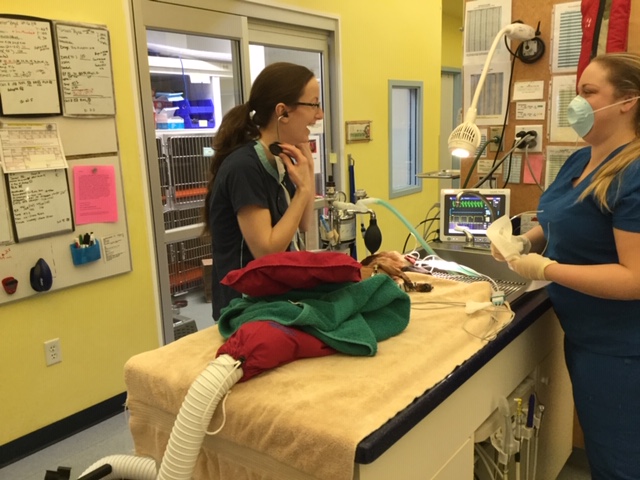Veterinary Services
Pet Dentistry in Grafton, WI
Our skilled veterinarians prioritize your pets’ dental well-being, providing everything from cleanings to dental treatments, ensuring joyful, healthy smiles for your furry friends.
Pet Dentistry
Dental care is very important to your pet’s health. Both cats and dogs live significantly longer – one to three years longer – if they receive good dental care throughout their lives. Removing plaque and tartar under anesthesia keeps the teeth and gums healthy and is the mainstay of veterinary dental care. While your pet is under anesthesia, we can also x-ray the teeth to look for problems under the gumline and perform other minor procedures such as tumor or wart removal, microchipping, or ear flushing.
Canine Resorptive Lesion Case
This is Weilly, who is a 9-year-old West Highland white terrier (Weilly the Westie!) He came to our animal hospital for a dental cleaning. Once we cleaned the plaque and tartar from the teeth, we could see three problems. He had a 4th upper premolar tooth that was discolored, which signified that at least one root of this three-rooted tooth was dead, leaving the tooth without its normal blood supply. In addition, both his lower 1st molars had holes in them on the tongue sides of the teeth (where they couldn’t be seen without anesthesia).
X-rays of these three teeth revealed holes in the enamel and dentin of the teeth. We call these cavities “resorptive lesions” because the tooth structure is being reabsorbed back into the body, leaving a gaping hole and exposed pulp and nerve tissue. Ouch! The large, irregularly shaped hole in the upper 4th premolar had almost eaten entirely through the bone between the two roots and one of the roots as well.
Weilly’s owners were faced with the choice between extracting all three teeth for a good sum of money or extracting just the upper tooth and having root canals and fillings for the lower molars by a dental specialist for an even greater sum of money – several thousand dollars. These are three of the four largest chewing teeth in the dog’s mouth, so saving two of them would be desirable, owner’s financing permitting. Unfortunately for both the pet and the pet owner, Weilly is likely to develop more resorptive lesions in the future, as the cause is unknown, and there is no preventative treatment that would safeguard the rest of his teeth. Which option would you choose if this were your pet?
Brushing Your Cat’s Teeth
Risk & Benefits
Are you curious about what happens behind the scenes when your pet needs surgery or dental care? Are you worried about anesthetic risks or surgical complications? Learn about the risks and benefits of all our animal hospital’s common procedures and about the options you will have to decide on at your admission appointment.

